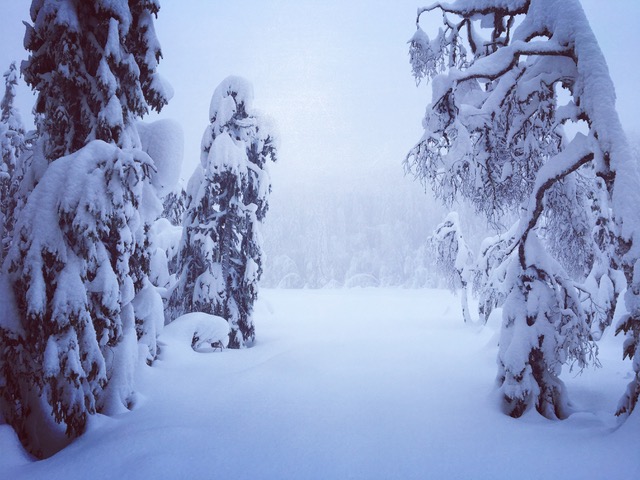NEWS ANALYSIS: There’s been no end to the scare-stories in Norwegian media about what a cold and tough year lies ahead for the economy. The higher costs of everything from energy to food and loan payments have prompted economists to warn that 2023 will be challenging, but now signs are emerging that it may not be as bad as expected.

The latest sign of relief came last week when Norway’s central bank opted against raising interest rates because its top officials weren’t sure it was necessary. Bank officials noted that unemployment remains very low, at just 1.6 percent according to state welfare agency NAV, and that economic activity remains almost surprisingly high. Even Norway’s weak krone has strengthened a bit in the past week and most households seem to be adjusting to electricity bills that are triple or quadruple what they used to be.
Pessimism was nonetheless the norm around New Year. “Everyone will come to mark that their economy will be tight in 2023,” warned Magne Gundersen, consumer economist at Sparebank1. He ominously told news bureau NTB during the New Year’s weekend that “no one will avoid it.”
Norway’s national employers’ organization NHO even used the Norwegian word “Uro” as its logo during its annual conferene the following week. It means “unease,” and commentator Frithjof Jacobsen wrote in newspaper Dagens Næringsliv (DN) that NHO seemed to be “doing its best to scare the life out of everyone.” NHO’s president Svein Tore Holsether, who also happens to lead the large fertilizer producer Yara, said from the stage that he’d never been so concerned. Conference attendees were served up lots of scenarios about “the perfect storm,” threats from abroad and, before it even began, more dire warnings from NHO’s chief economist Øystein Dørum.

“The storm has also hit Norway,” Dørum wrote in his own column in DN, worrying that years if not decades of economic growth and prosperity were coming to an end. He could report that initial post-pandemic optimism was quickly replaced by the pessimism that’s spread since, especially after Russia invaded Ukraine. He could also report that a survey of NHO member companies showed half of them expecting weaker markets. Only 10 percent of those questioned expect improvements.
“The rise in purchasing costs is the largest in 50 years,” Dørum wrote. Inflation in most industrialized countries, he noted, hovered around 2 percent just two years ago. “Now it’s over 10 percent,” he added.
Figures released shortly after the conference, however, showed that Norway’s own inflation rate later declined. It fell from 6.5 percent in November to 5.9 percent in December, according to state statistics bureau SSB (Statistics Norway). Record-high gas prices also gave Norway an historically high trade surplus last year, not least after Norway became the largest supplier to the rest of Europe after Russian gas imports all but ceased.
Consumer complaints continue, though, as prices keep jumping at the grocery store, the gas pump and, not least, in monthly utility bills. Rental rates have also risen by an average 7.5 percent in Norway’s four largest cities, according to real estate organization Eiendom Norge. Housing prices are already so high in Oslo that a nurse can only afford to purchase 1 percent of homes on the market.
There are some bright spots, though, depending on one’s perspective. Most real estate brokers expect housing prices to fall this year, perhaps by around 3.5 percent after years of increases. While unemployment may rise, with some firms like Telia launching layoffs, most economists don’t think it will be dramatic. There will also be pressure to raise wages to help compensate for rising prices.

Most importantly, predict some energy analysts, electricity rates may decline. Marius Holm Rennesund, a power analyst at Thema Consulting, thinks the outlook in January was much better than expected after lots of rain and snow filled up reservoirs. Nor have the worst scenarios of gas rationing and energy shortages in Europe materialized.
“It’s difficult to predict the future, but things have gone the right way,” another analyst, Sigbjørn Seland at Storm Geo Nena, told newspaper Klassekampen. He thinks Norwegian electricity rates on average will be lower in 2023 than they were in 2022. Ola Hvalbye at investment bank SEB agreed: “Overall we think electricity will be cheaper” than last year, which he described as “chaotic, volatile and uncertain.”
That doesn’t mean electricity will become cheap again. “I think it’s important to note that we aren’t going back to ‘normal,'” Hvalbye said. “I think 2023 will better and more predictable, but we’re still talking about higher rates that will continue.” Tor Reier Lillehold at Volue Insight is more optimistic, telling DN that “the worst is behind us.” He predicts rates half of what they hit last year, even though that will still be higher than what Norwegians long viewed as normal.
Energy efficiency has risen
Meanwhile, the electricity shocks of last year have resulted in much more efficient use of energy in Norway and a major decline in electricity consumption in Southern Norway, where rates have been highest. Households cut their consumption in November by 10.7 percent compared to the same month in 2021, according to recent figures from state energy directorate NVE. Electricity consumption at holiday homes was down by 23.5 percent, even after being corrected for temperature variations. Norwegians accustomed to historically inexpensive electricity because of the country’s hydroelectric resources have learned to put sweaters on at home instead of jacking up the heat. Energy efficiency alone can help reduce monthly bills.

Norway’s gross national product excluding offshore oil and gas also actually rose 0.2 percent in November, according to numbers released last week. Even NHO’s chief economist Dørum had to admit that Norway’s economy “has held up amazingly well.” There are also predictions that oil prices will rise again, perhaps back up to USD 100 a barrel for North Sea crude, and that always boosts the economy and strengthens the Norwegian currency. Seafood exports, Norway’s next most-important industry, also set another record last year.
It’s the oil, though, that remains the world’s most important commodity, and Norway is still pumping up lots of it. Kjersti Haugland, chief economist at Norway’s biggest bank DNB, predicts an average oil price of USD 105 in 2023, especially if China cranks up production after the pandemic as expected.
Haugland thinks interest rates in Norway will top out at 3 percent in March. The country’s economy, despite all the New Year gloom and doom, is thus expected to stabilize with widespread participation in the workforce and inflation easing. “We’re better prepared to handle the winter than expected,” she told DN last week. The central bank also wants to avoid any “hard landing” later this year.
“We’re seeing some signs of turnaround,” Norges Bank Governor Ida Wolden Bache told NTB even before the bank’s policy rate was kept at 2.75 percent last week. “We think the Norwegian economy will see weaker growth ahead.” But there will still be growth.
NewsinEnglish.no/Nina Berglund

